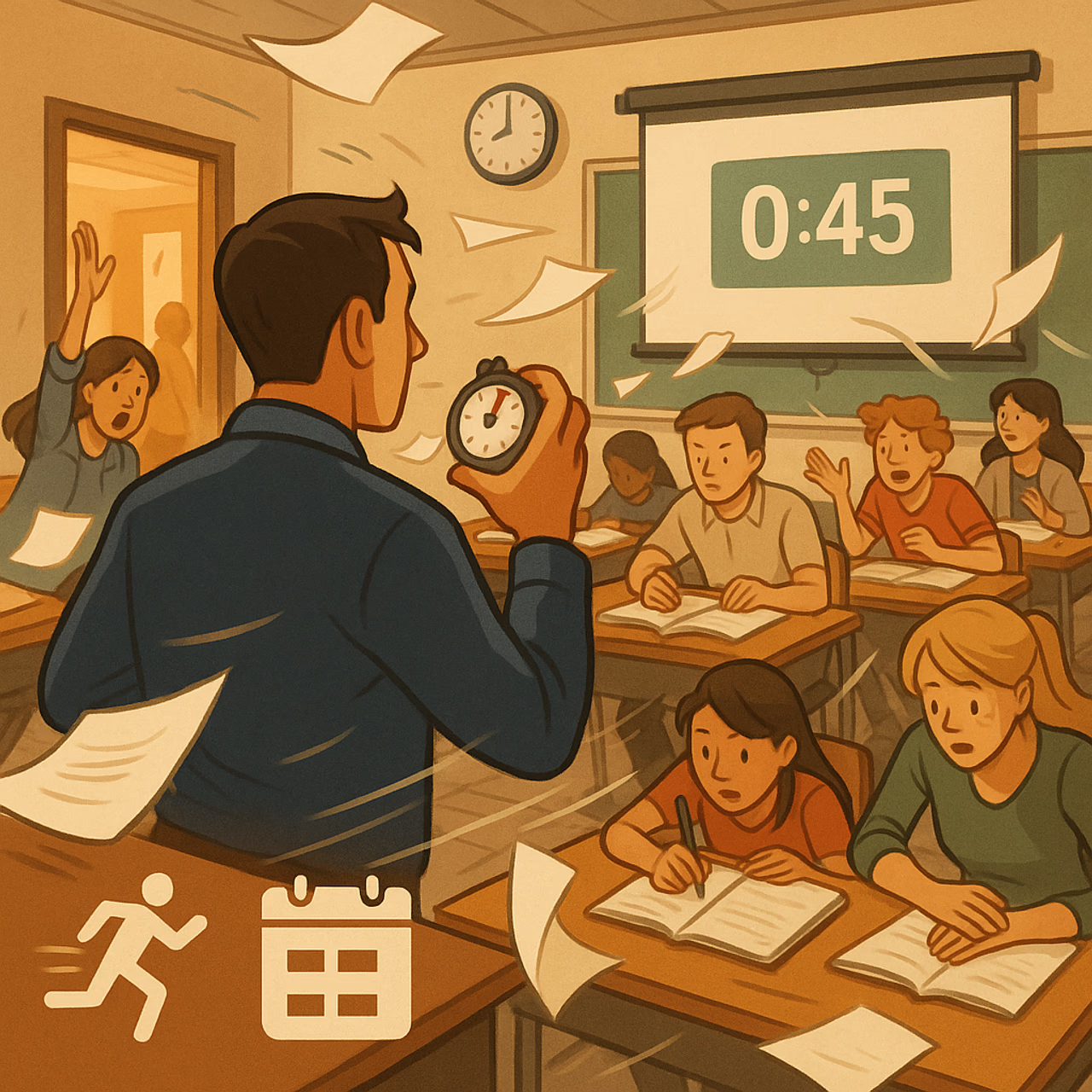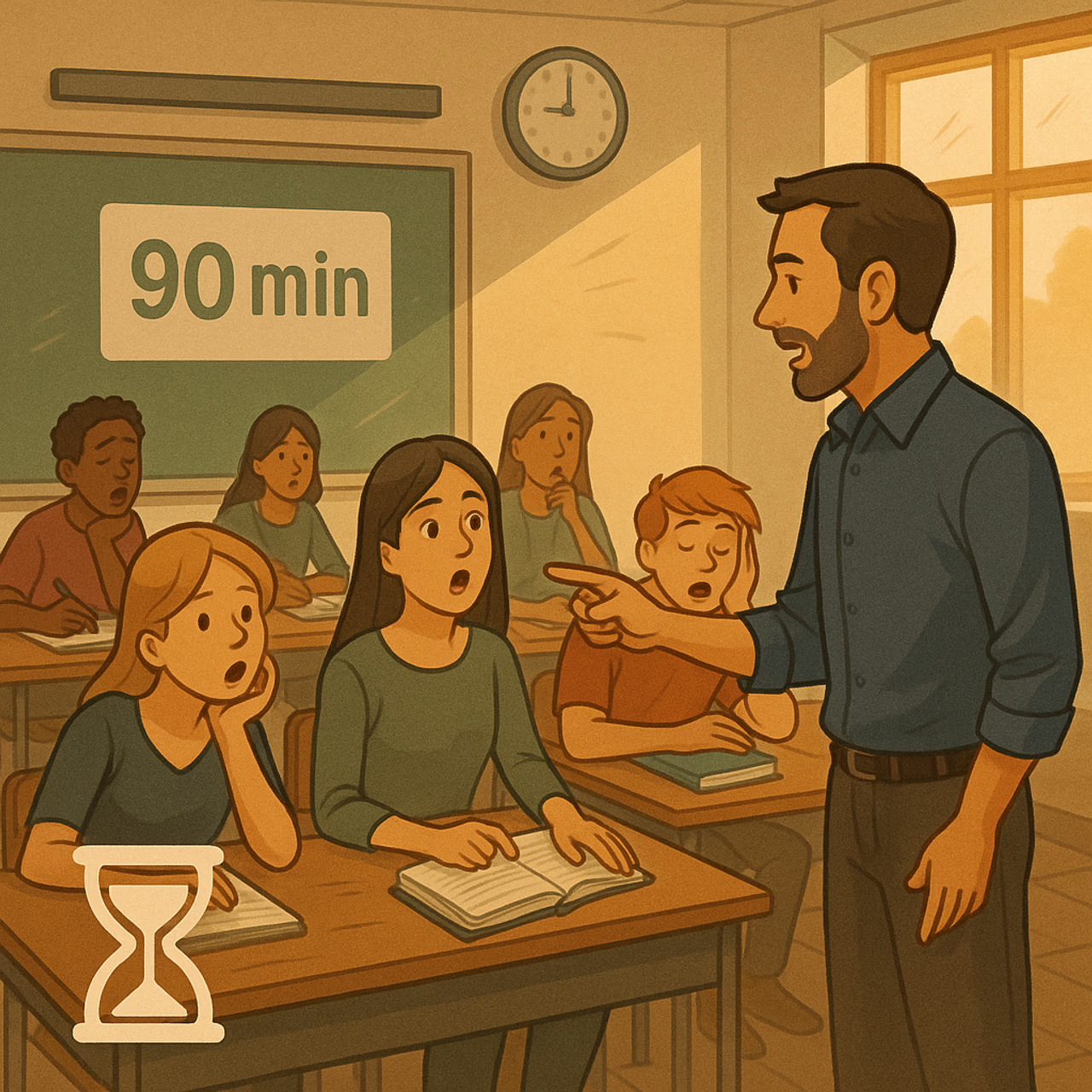
Thoughts on Classroom Length
Do duration and time of the class matter, and for whom?
teacher01
게시된 시간: 2025년 3월 26일
업데이트된 시간: 2025년 10월 8일
At every school I taught at, the duration of the class, the break time between the class and the time of day of the class was unique to the school. It was always interesting to see these small differences play out on student learning and engagement.1

In one school the classes were simple 45 minute blocks with 15 minute breaks between each set of students. This was great from a teacher schedule perspective -- short classes / lenient breaks, but from an activity lens it was a literal race to the bell -- there was very little time to set up larger tasks and it required minute to minute time management. In terms of edification, it hurt the ability of students to really get into a topic in the presence of the teacher, or in the presence of their peers with a teacher keeping a watchful eye (i.e., where everyone should in theory be focused on the task).

On the flipside, the longest class length I had was two 50 minute blocks with a 10 minute break.2 This was great for student learning on most activities, but at times I could see students flagging. In general the longer the class the more downward pressure on the student. If a student had a poor sleep or didn't eat, or didn't do the reading it really starts to show in the longer class times in most teaching formats. Similarly, the longer the class duration, the more likely the student is called on by the teacher or forced to speak in a group and demonstrate to everyone their knowledge of the topic (or lack thereof).

Cooke3 -- a doctoral student and researcher -- did a thorough review of the literature4 and came to the definitive conclusion that nothing was conclusive. Lots of research seemed to go both ways, but two parts that stood out, were the finding that students of medium ability improved the most using longer class times5 and that schools had better overall outcomes if they adopted longer class times.
The unfortunate realization from my experience teaching is that the consideration on learning or a focus on student outcomes often comes last, whereas typical practical realities take center stage, e.g., staffing concerns, student intake rates, scheduling around holidays, extracurriculars, when parents can conveniently commute in, etc. To be fair, the practical realities mentioned are typically realistic and intractable, but its unfortunate there isn't a way around this.
There are a lot of variables that impact student learning, which makes it impossible to narrow down to one factor, but at the same time, this is just what I saw personally.
I need to double check this
At least that's what it looks like to me, please do your own research!
In this case, longer class times is my general language for block scheduling (this is a typical format in the USA, but may not be common in other countries)